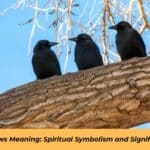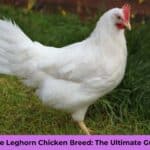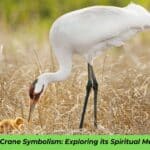Have you noticed the absence of that familiar, melancholic cooing in your backyard lately? You’re not alone. Across North America, bird enthusiasts have been asking, “Why don’t I hear Mourning Doves anymore?” This comprehensive guide will explore the reasons behind this apparent silence, debunk common misconceptions, and offer insights into the fascinating world of Mourning Doves.
Mourning Doves 101: Know Your Cooing Neighbor
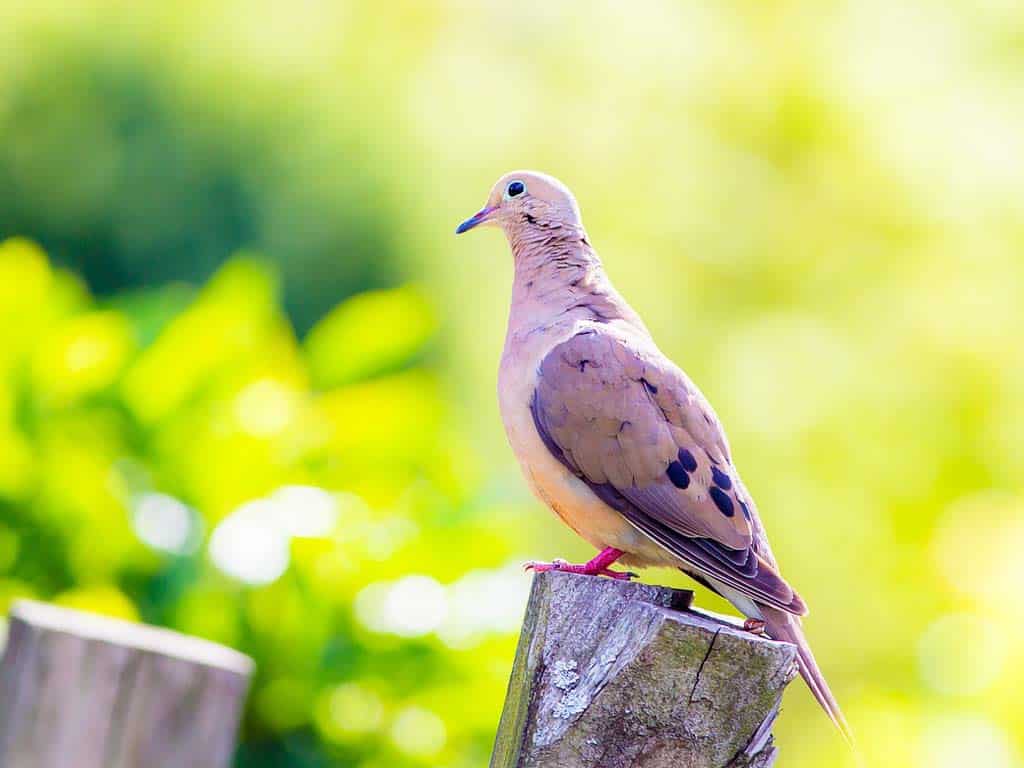
Before we dive into the mystery of the missing calls, let’s get acquainted with our feathered friend. The Mourning Dove (Zenaida macroura) is a medium-sized bird native to North and Central America. Known for its distinctive “coo-AH, coo, coo, coo” call, this bird has been a familiar sight and sound in suburban and rural areas for generations.
Quick ID Guide:
- Size: 9-13 inches long
- Wingspan: 17-19 inches
- Weight: 4-6 ounces
- Color: Grayish-brown with black spots on wings
- Distinctive features: Long, tapered tail; small head with black spot behind the eye
Mourning Doves are widely distributed across North America, from southern Canada to central Mexico. They’re adaptable birds, thriving in various habitats from open woodlands to urban parks.
The Great Mourning Doves Detective: Reasons Behind the Silence
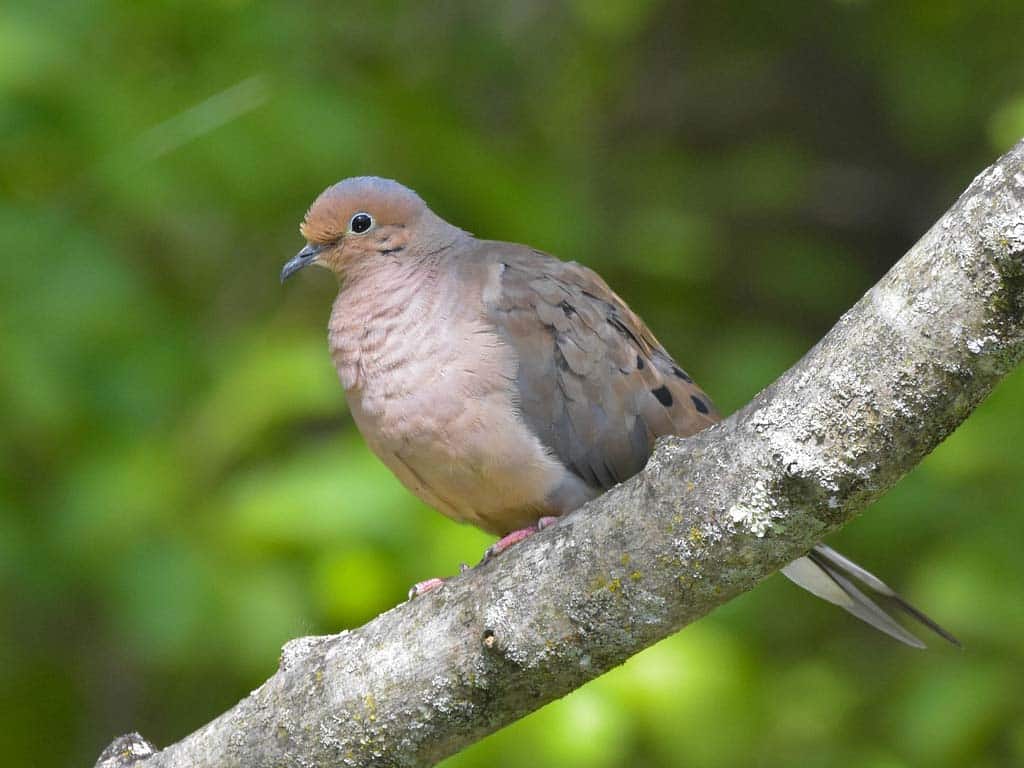
If you’ve noticed a decrease in Mourning Dove calls, several factors could be at play. Let’s investigate the potential culprits:
Check this out Parrots in Florida – Complete Guide To Wild Parakeets In Florida
1. Natural Cycles: Migration and Seasonal Shifts
Mourning Doves are partial migrants, meaning some populations migrate while others remain resident year-round. This behavior can lead to fluctuations in local populations throughout the year.
Seasonal Pattern:
- Spring/Summer: Peak calling season (breeding)
- Fall: Some populations begin to migrate south
- Winter: Reduced calling as birds focus on survival
During migration, Mourning Doves can travel up to 1,000 miles from their breeding grounds to wintering areas. This seasonal movement can significantly impact local populations, leading to periods of silence in certain regions.
2. Urban Development: How Cityscapes Affect Dove Populations
As urbanized environments expand, natural habitats shrink. This transformation can have both positive and negative effects on Mourning Dove populations:
| Pros of Urban Development | Cons of Urban Development |
| Access to human-provided food | Increased collision risks (windows, vehicles) |
| Year-round water sources | Noise pollution affecting communication |
| Reduced predator populations | Loss of natural nesting sites |
Urban areas can provide a steady food supply through bird feeders and landscaped areas. However, the challenges of navigating a human-dominated landscape can be significant. Studies have shown that urban Mourning Doves may alter their calling patterns to compensate for increased ambient noise.
3. Climate Change: Shifting Ranges and Altered Behaviors
Global warming is causing significant changes in bird behavior and distribution:
- Range expansion: Mourning Doves are moving northward as temperatures rise
- Altered migration patterns: Some populations may migrate less or not at all
- Changes in breeding seasons: Earlier nesting may lead to misaligned food availability
A study published in the journal “Global Change Biology” found that Mourning Doves are expanding their winter range northward by an average of 0.5 miles per year. This shift can lead to changes in local populations and calling patterns.
4. Predator Dynamics: The Impact of Cats, Hawks, and Other Threats
Mourning Doves face numerous predators, which can affect local populations:
- Domestic cats: Responsible for millions of bird deaths annually
- Raptors: Cooper’s Hawks and Sharp-shinned Hawks are primary predators
- Ground predators: Squirrels and raccoons often raid nests
The presence of predators can significantly impact Mourning Dove behavior. In areas with high predator populations, doves may become more vigilant and reduce their calling to avoid detection.
5. Human Activities: Noise Pollution and Its Effects on Bird Communication
Our noisy world can significantly impact bird behavior:
- Masking effect: Urban noise can drown out bird calls
- Altered calling patterns: Birds may call at different times or frequencies to be heard
- Stress: Constant noise can lead to reduced calling and breeding success
A study in the journal “Behavioral Ecology” found that Mourning Doves in noisy urban environments may shift their calling to earlier in the morning to avoid peak human activity hours.
Myth Busters: Common Misconceptions About Mourning Doves
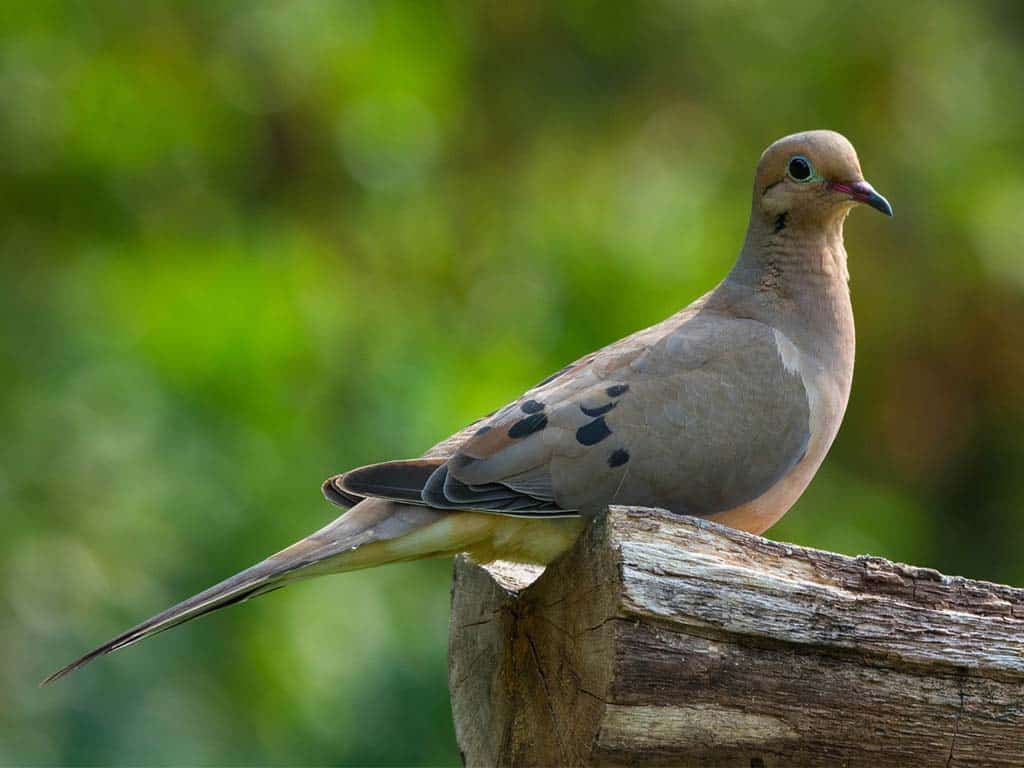
Let’s address some prevalent myths about Mourning Doves:
Myth 1: Mourning Doves are going extinct
Fact: While local populations may fluctuate, Mourning Doves are not considered extinct or endangered. The International Union for Conservation of Nature (IUCN) lists them as a species of “Least Concern” due to their large range and stable global population. The North American Breeding Bird Survey estimates the global breeding population at 130 million individuals.
Myth 2: Mourning Doves are invasive
Fact: Mourning Doves are native to North America and are not considered invasive. They’re protected under the Migratory Bird Treaty Act, highlighting their status as a valued native species. This treaty, signed in 1918, protects over 1,000 migratory bird species across North America.
Myth 3: They’ve all been replaced by Eurasian Collared Doves
Fact: While Eurasian Collared Doves have expanded their range in North America, they haven’t replaced Mourning Doves. The two species often coexist, although competition for resources can occur. Eurasian Collared Doves were introduced to the Bahamas in the 1970s and have since spread across North America, but their presence has not led to widespread displacement of Mourning Doves.
Check this out Why Do Hawks Screech? The Surprising Truth
Threats to Mourning Doves Populations

Despite their adaptability, Mourning Doves face several challenges:
1. Habitat Loss: The Biggest Challenge
The loss of suitable nesting habitat due to urbanization and agricultural intensification is a significant threat. Mourning Doves need:
- Open areas for foraging
- Trees or shrubs for nesting
- Access to water sources
A study by the Cornell Lab of Ornithology found that Mourning Doves have experienced a 15% decline in their overall population since 1966, largely attributed to habitat loss.
2. Hunting Pressures: A Look at Dove as Game Birds
Mourning Doves are popular game birds in many states:
- Annual harvest: Approximately 20 million birds
- Hunting regulations: Vary by state, with limits on bag size and hunting seasons
- Population impact: Generally sustainable, but can contribute to local declines
While hunting is carefully regulated, it can impact local populations. The U.S. Fish and Wildlife Service closely monitors harvest rates to ensure long-term sustainability.
3. Window Collisions: An Often-Overlooked Danger
Collisions with windows cause millions of bird deaths annually:
- Mourning Doves are particularly susceptible due to their fast, direct flight
- Urban and suburban areas pose the highest risk
The Fatal Light Awareness Program (FLAP) estimates that up to 1 billion birds die from window collisions each year in North America alone.
4. Diseases Affecting Mourning Doves
Several diseases can impact Mourning Dove populations:
- Trichomoniasis (canker): A parasitic disease that can cause lesions in the mouth and throat
- Avian pox: A viral infection that causes wart-like growths on the skin
- West Nile virus: Can be fatal to birds, including Mourning Doves
The Cornell Wildlife Health Lab reports that trichomoniasis outbreaks can cause significant mortality in local Mourning Dove populations.
Check this out Finches in Ohio: 9 Ohio Finches (With Photos)
Bringing Back the Coo: How to Attract Mourning Doves

Want to encourage Mourning Doves in your area? Here are some tips:
- Create a dove-friendly habitat:
- Plant native trees and shrubs like dogwoods, pines, and oaks
- Maintain open areas for ground feeding
- Leave some leaf litter for nesting material
- Feeding strategies:
- Offer millet, cracked corn, and sunflower seeds
- Use ground feeders or low platform feeders
- Scatter some seed on the ground to mimic natural foraging
- Provide water sources:
- Install birdbaths or shallow water features
- Keep water clean and fresh
- Consider adding a dripper or mister to attract birds with moving water
- Offer safe nesting sites:
- Install nesting shelves or platforms 6-12 feet above the ground
- Avoid disturbing nesting areas during breeding season (spring and summer)
- Provide nesting material like small twigs and pine needles
Mourning Doves: Citizen Science: Be Part of the Solution

You can contribute to Mourning Dove conservation efforts:
- Participate in monitoring programs:
- Join the North American Breeding Bird Survey
- Contribute to eBird, a global bird observation database
- Participate in the Great Backyard Bird Count each February
- Report sightings:
- Use apps like Merlin Bird ID or iNaturalist
- Share observations with local Audubon chapters
- Contribute to Project FeederWatch during winter months
- Join community initiatives:
- Volunteer for habitat restoration projects
- Support local bird conservation organizations
- Advocate for bird-friendly policies in your community
Check this out Birds With Funny Names – The Complete List of Funny Bird Names
The Bigger Picture: Mourning Doves as Environmental Indicators

Mourning Dove populations can tell us a lot about ecosystem health:
- Habitat quality: Their presence indicates suitable food and nesting resources
- Environmental toxins: Doves are sensitive to lead poisoning, serving as indicators of environmental contamination
- Climate change: Changes in dove distribution and behavior can signal broader ecological shifts
Researchers at the University of Wisconsin found that Mourning Doves can be effective bioindicators for lead contamination in urban environments due to their ground-feeding habits.
Check this out Woodpeckers In Michigan – 8 Sensational Michigan Woodpeckers
Case Study: Regional Declines in Mourning Doves Populations

A 2019 study by the U.S. Fish and Wildlife Service highlighted regional declines in Mourning Dove populations:
- Eastern Management Unit: 2.6% annual decline
- Central Management Unit: 0.9% annual decline
- Western Management Unit: 2.0% annual decline
Researchers attributed these declines to a combination of factors, including habitat loss, changes in agricultural practices, and climate change. The study emphasized the need for continued monitoring and conservation efforts.
The Role of Lead in Mourning Doves Declines

Ingestion of lead is a significant threat to Mourning Doves, particularly in areas with high hunting pressure. Doves may mistake lead shot for grit, leading to poisoning. A study in the Journal of Wildlife Management found that up to 2.5% of Mourning Doves in hunting areas had ingested lead shot.
To address this issue:
- Some states have banned lead shot for dove hunting
- Hunters are encouraged to use non-toxic alternatives
- Habitat managers are working to reduce lead contamination in key foraging areas
The Impact of Pesticides on Mourning Doves Populations

While not as susceptible as some other bird species, Mourning Doves can be affected by pesticide use:
- Direct poisoning: Ingestion of treated seeds or contaminated insects
- Reduced food availability: Pesticides can decrease insect populations, an important food source for young doves
- Habitat degradation: Herbicides can reduce plant diversity, affecting nesting and foraging habitats
A study in the journal “Environmental Toxicology and Chemistry” found that neonicotinoid pesticides can negatively impact Mourning Dove health and reproduction, even at sublethal levels.
Mourning Doves Conservation Success Stories: Bringing Back the Coo

Despite the challenges, there are success stories in Mourning Dove conservation:
- Urban greenspace initiatives: Cities like Chicago and New York have implemented programs to create bird-friendly urban environments, benefiting Mourning Doves and other species.
- Sustainable agriculture practices: Some farmers are adopting wildlife-friendly farming methods, providing better habitat for Mourning Doves in agricultural areas.
- Community engagement: Local Audubon chapters and bird clubs have successfully raised awareness about Mourning Dove conservation, leading to increased citizen involvement in monitoring and habitat improvement projects.
Looking to the Future: Ensuring the Mourning Dove’s Song Continues

As we work to understand and address the challenges facing Mourning Dove populations, several key areas of focus emerge:
- Habitat preservation and restoration: Protecting existing habitats and creating new ones in both urban and rural areas.
- Reducing human-caused threats: Implementing bird-friendly building designs, promoting responsible pesticide use, and encouraging the use of non-toxic hunting ammunition.
- Continued research: Expanding our understanding of Mourning Dove ecology, migration patterns, and responses to environmental changes.
- Public education: Raising awareness about the importance of Mourning Doves and how individuals can contribute to their conservation.
- Policy advocacy: Supporting legislation that protects migratory birds and their habitats.
Conclusion: Listening for Tomorrow’s Coos
While the silence of Mourning Doves may be concerning in some areas, it’s important to remember that their overall population remains stable. However, local declines serve as a reminder of the delicate balance between wildlife and human activities.
By understanding the challenges Mourning Doves face and taking steps to create dove-friendly environments, we can help ensure that future generations will continue to enjoy their gentle coos. Remember, every backyard can make a difference in supporting these beloved birds.
“In the end we will conserve only what we love; we will love only what we understand; and we will understand only what we are taught.” – Baba Dioum, Senegalese forestry engineer
Let’s work together to keep the song of the Mourning Dove alive in our communities, one coo at a time. By being mindful of our impact on the environment, supporting conservation efforts, and creating wildlife-friendly spaces, we can ensure that the Mourning Dove’s melancholic call remains a cherished part of our natural soundscape for generations to come.





